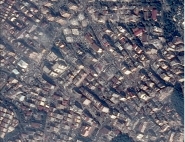Marine Applications
![]()
Oceans cover 70% of the planet's surface, and are involved in a number of major economic, social, scientific and technological issues. A large part of the world's economic activity and a wide range of services, leisure activities and social advantages depend on the good use of the sea.
| The global production of "undersea" oil and natural gas therefore represents approximately 20% of the world production of hydrocarbons. Polar zones are also extremely rich in minerals (zinc, iron, etc.), or in fossilized energy (oil, coal, etc.). The vast majority of trade exchanges are carried out by sea. | |
| At the present time, nearly 3 thousand million people live less than 60 km from the coast, and two thirds of the towns with a population of more than 2.5 million inhabitants are situated near estuaries. By the year 2020, probably 75% of the world's population will be concentrated in these areas. |
The world fishing catch represents approximately 20% of the human consumption of animal proteins.
The expected increase in population, along with the accompanying pressure exerted on natural resources, implies that the economic importance of the oceans is likely to increase rather than diminish, as will the necessity to exploit them in a sustainable way.
Lastly, the oceans regulate the world's climate, and everything we do on Earth has an effect on the health of the oceans. The climate would gradually appear to be warming. This type of global warming, due to its consequences on sea level, water temperature, the surface of polar ice caps, etc. would have widespread repercussions, particularly on the economy: flooding and increased erosion of the coastline, together with an upwelling of salt water into estuaries, which would have a negative effect on tourism and reduce the usable reserves of fresh water. It would also change the existing system of currents and water courses, which would affect the position and abundance of fishing zones, consequently transforming the coastal ecosystems dependent on these factors, etc.
It is therefore fundamental to have information on the present and future conditions of the seas and oceans, their living resources and their role in the evolution of the climate.
The Pleiades system will be used to observe a number of parameters, including:
|
![]()
